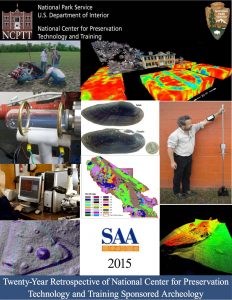
Since 1994, the National Center for Preservation Technology and Training, a program of the National Park Service (ncptt.nps.gov), has engaged in state-of-the-art research in archeological treatments and technologies. The Center provides grants, education, research, and training opportunities in the areas of archeology and collections, architecture and engineering, materials conservation, and historic landscapes. To date, over $10 million dollars have been spent on sponsored research via our grants program. This symposium is a 20 year retrospective and is focused on the innovative contributions of the award recipients to the archaeological sciences, methods, and technologies.
Specifically, the authors were asked to re-examine their original work and address the impact of their research on their respective fields; how their work has influenced their research; and progress in their study areas since their initial award. These proceedings include topics ranging from the development and fielding of magnetic susceptibility, archaeogeophysics, and a friction cone-penetrometer, to plasma extraction 14C analysis, site location probability models, ceramic thin-section analysis, freshwater shell artifact and temper sourcing, and Native American consultation protocols.
The papers and presentations included here re ect the depth and breadth of the types of studies funded by NCPTT. The materials herein are presented in their entirety in their original format with minor editing. We hope you find the proceedings interesting and informative, and look forward to the next twenty years. Special thanks to Tad Britt, Chief of NCPTT’s Archeology & Collections program, who conceived and organized this retrospective. Thanks also to both the authors and readers for your contribution and patience in getting the publication ready.
Kirk A. Cordell
Executive Director
National Center for Preservation Technology and Training April 2015
Last updated: April 7, 2025
